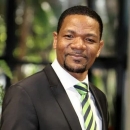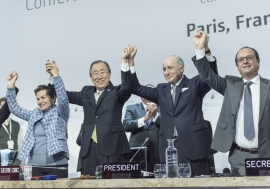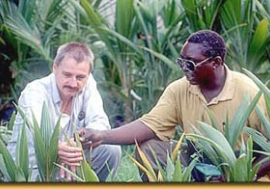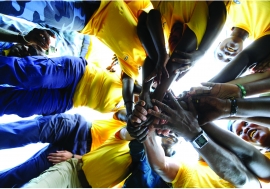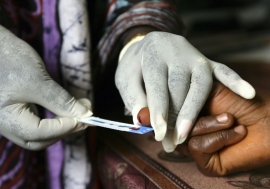Light at the end of the tunnel
Light at the end of the tunnel
Environmental sustainability is crucial to Africa’s development. As the target date for achieving the MDGs comes to a close, achieving environmental sustainability remains a challenge.
While African countries made great efforts to reduce greenhouse gas emissions and the use of ozone-depleting substances while strengthening the protection of their territorial and marine areas, more forest cover in the region was lost — either through devastation by natural causes or because the land was converted to other uses.
As for ensuring safe drinking water, the rest of the world met the target by 2010, but 45 countries — 18 of them in Africa — did not meet the 2015 deadline. Still, improvement was registered. According to the 2014 MDGs report, by 2012, 69% of the African population had access to an improved drinking water source, up from 48% in 1990, and about 14% of countries that met the water target in 2012 were in Africa, while a further six countries, Benin, Cameroon, Ethiopia, Guinea-Bissau, Liberia and Morocco, were on track.
Urban areas tended to have better access to water distribution than rural areas, although with exceptions. For example, in Angola, Chad, Niger, Djibouti and Guinea-Bissau, access to safe drinking water has increased more in urban areas than in rural areas, while rural coverage has increased faster than urban coverage in Burkina Faso, Ethiopia, Ghana, Malawi, Namibia, Swaziland and Uganda.
Enhancing access to piped drinking water on premises has been the strategy applied globally to ensure safe drinking water for the population. Only 16% of the population in Africa is connected to piped water on their premises — the lowest in the world.
On sanitation, Africa was off track. Between 1990 and 2010, sanitation coverage increased by just 4%, to reach about a third of the population. The number of Africans without an improved sanitation facility increased by almost 200 million people — to 612 million. In most rural areas of Africa, sanitation coverage is still below 50%. Even in urban areas, where coverage is better, the expansion of slum areas continues to pose a challenge to achieving this goal.
Thirty-two countries reached the target of having at least 10% of their territorial and marine areas protected, compared to 19 countries in 1990. Guinea-Bissau, Guinea, Republic of Congo, Morocco and Namibia registered the most remarkable progress.
Although Africa’s emissions are negligible, the region accounts for 20% of global net annual CO2 emissions derived from land use — that is CO2 emissions resulting from changes in the use of land. Africa registered remarkable progress in reducing the use of ozone-depleting substances, such as commercial and domestic refrigerants, domestic air conditioning, motor vehicle air conditioners, and non-medical aerosol propellants and solvents. The MDGs report observes that in the period 2000-2011, more than half of African countries achieved reductions in ozone depletion of over 50%. Algeria, Equatorial Guinea, Libya, Mauritius, Seychelles and South Africa emitted the most CO2, while Lesotho emitted the least. Countries that reduced their CO2 emissions were the Democratic Republic of the Congo, Gabon, Guinea, Mauritania, Rwanda, and Zambia, while significant emission increases were registered in Algeria, Angola and Nigeria.
To avoid trading off productivity for degradation, Africa has to harmonize industrial development with environmental sustainability, contrary to taking the “pollute first, clean up later” approach that most industrialized countries took.
Finally, as Africa transitions with the rest of the world to the Sustainable Development Goals, its priorities should centre around environmentally sustainable and socially inclusive industrial development.

